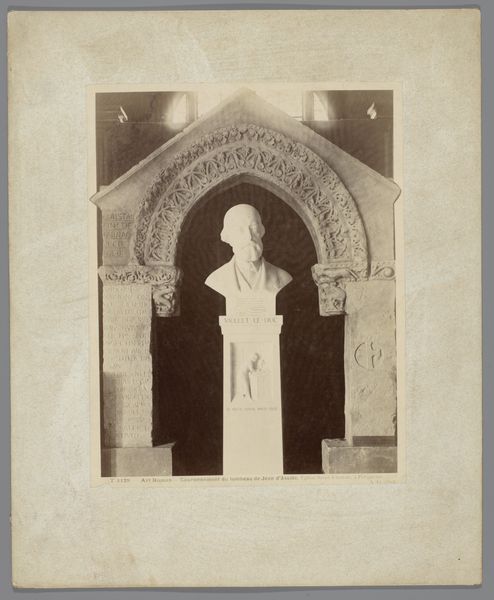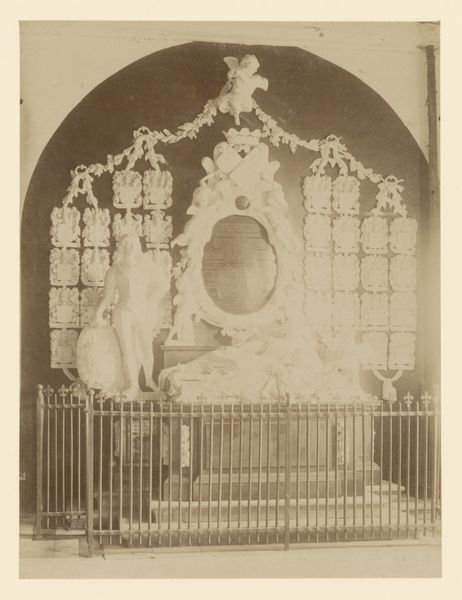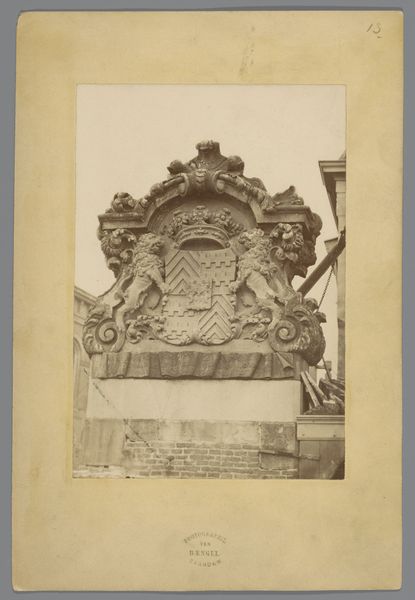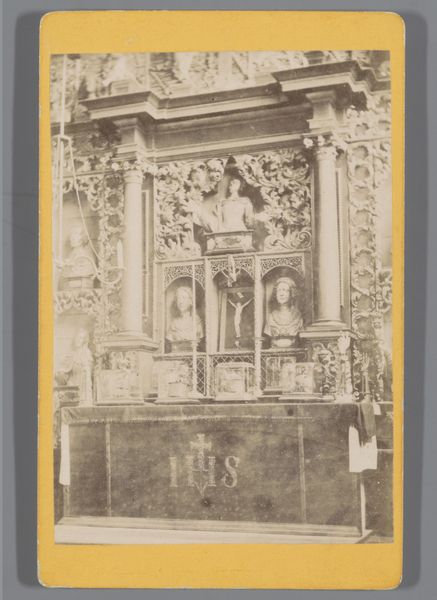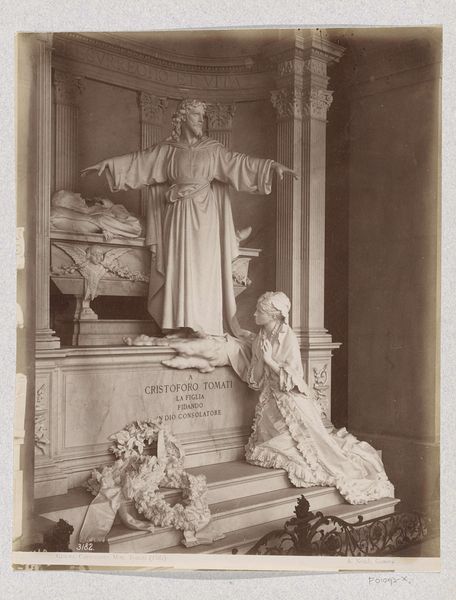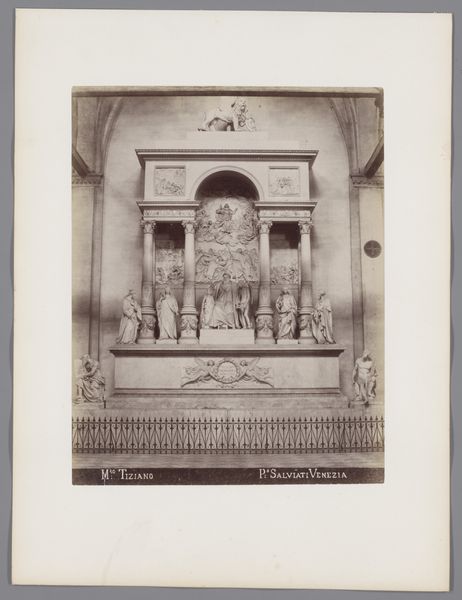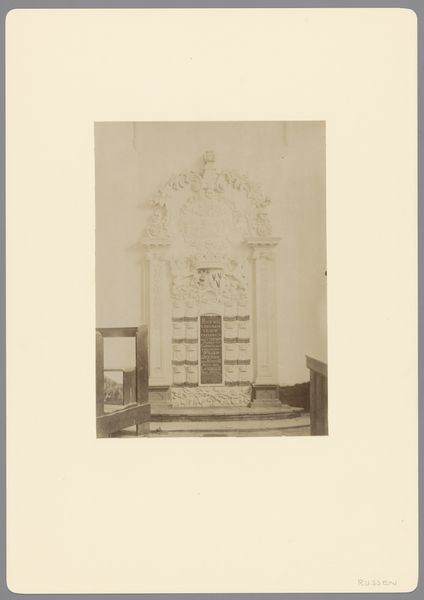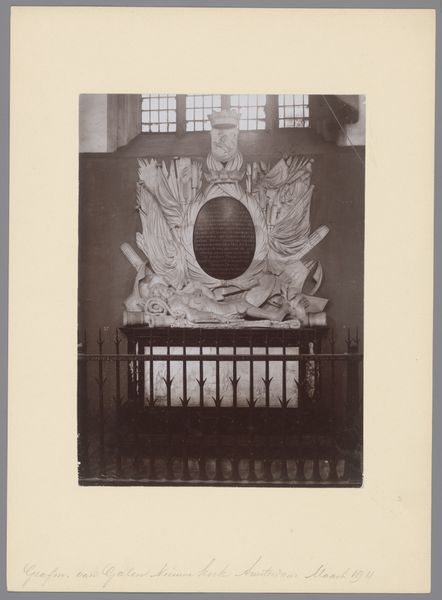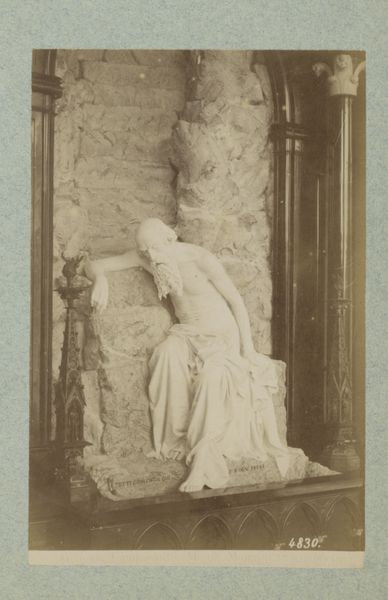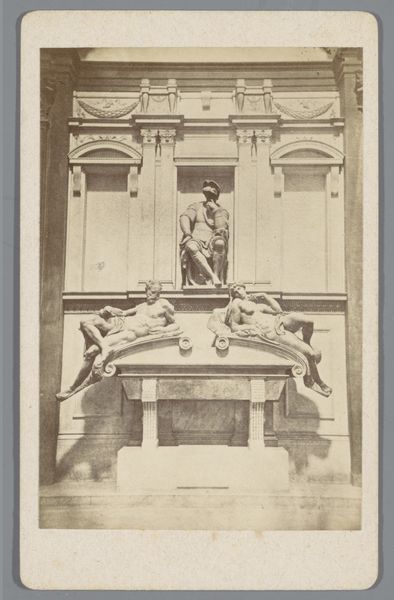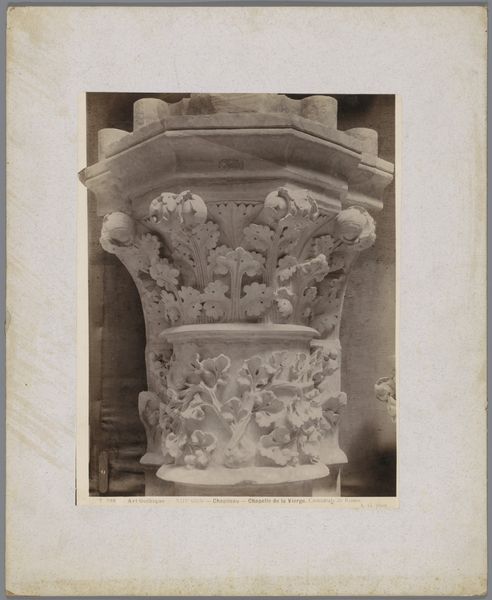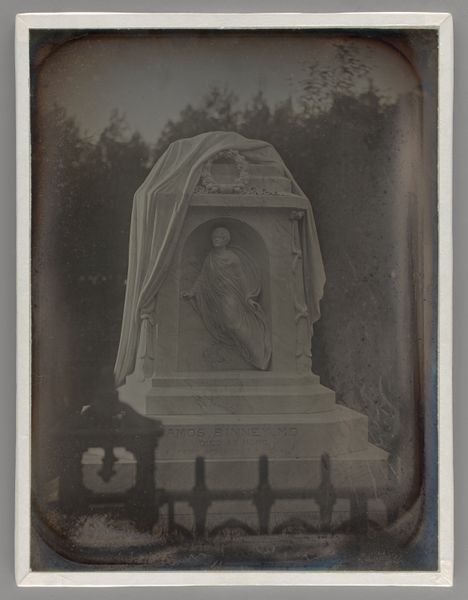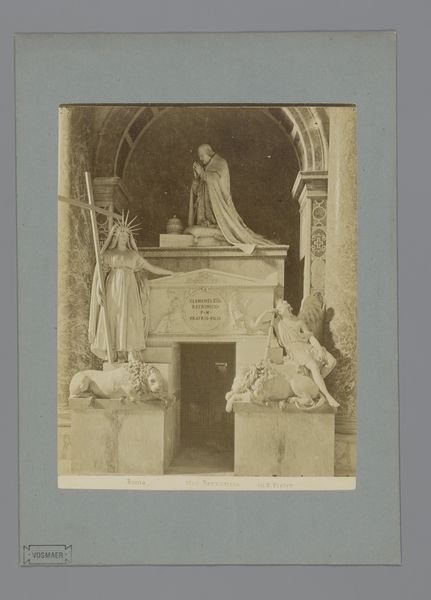
Grafmonument naar Giuseppe Benetti op de begraafplaats van Staglieno te Genua, Italië 1884 - 1890
0:00
0:00
photography, sculpture
#
portrait
#
figuration
#
photography
#
romanesque
#
sculpture
#
cityscape
#
history-painting
Dimensions: height 356 mm, width 257 mm
Copyright: Rijks Museum: Open Domain
Editor: Here we have an antique photograph, dating between 1884 and 1890, titled "Grave Monument to Giuseppe Benetti in the Staglieno Cemetery in Genoa, Italy". The sepia tone lends a somber feel. What cultural narrative do you see being conveyed here? Curator: The persistent motif of the veil captures my attention immediately. Throughout history, it’s been a symbol of transition, of moving between worlds - specifically here, perhaps, between the world of the living and the realm of the dead. Editor: Interesting. I see the veiled figure mourning the loss of the deceased along with the young child. It makes me wonder, what is the function of the empty frames? Curator: That’s an excellent point. They serve as potent symbols themselves – perhaps hinting at the fragments of a life now gone, or memories fading, yet still held within the architecture of remembrance. How does the sculptural group interact with the overall architectural design in your opinion? Editor: The monument's neo-Romanesque style emphasizes the history, religion, and overall seriousness of the occasion. It encourages introspection. Curator: Precisely. In the funerary context, what we often consider is a visual representation of a family's history and collective identity, literally carved in stone, linking the generations. Editor: I had not considered the lasting memory it provided for those remaining. Now I see how the monument uses a multitude of symbols to ensure this cultural memory will be sustained for years to come. Thank you. Curator: Indeed. Examining symbols is like peeling back layers of history and understanding what holds importance and meaning across eras. It's been a pleasure to share perspectives.
Comments
No comments
Be the first to comment and join the conversation on the ultimate creative platform.
